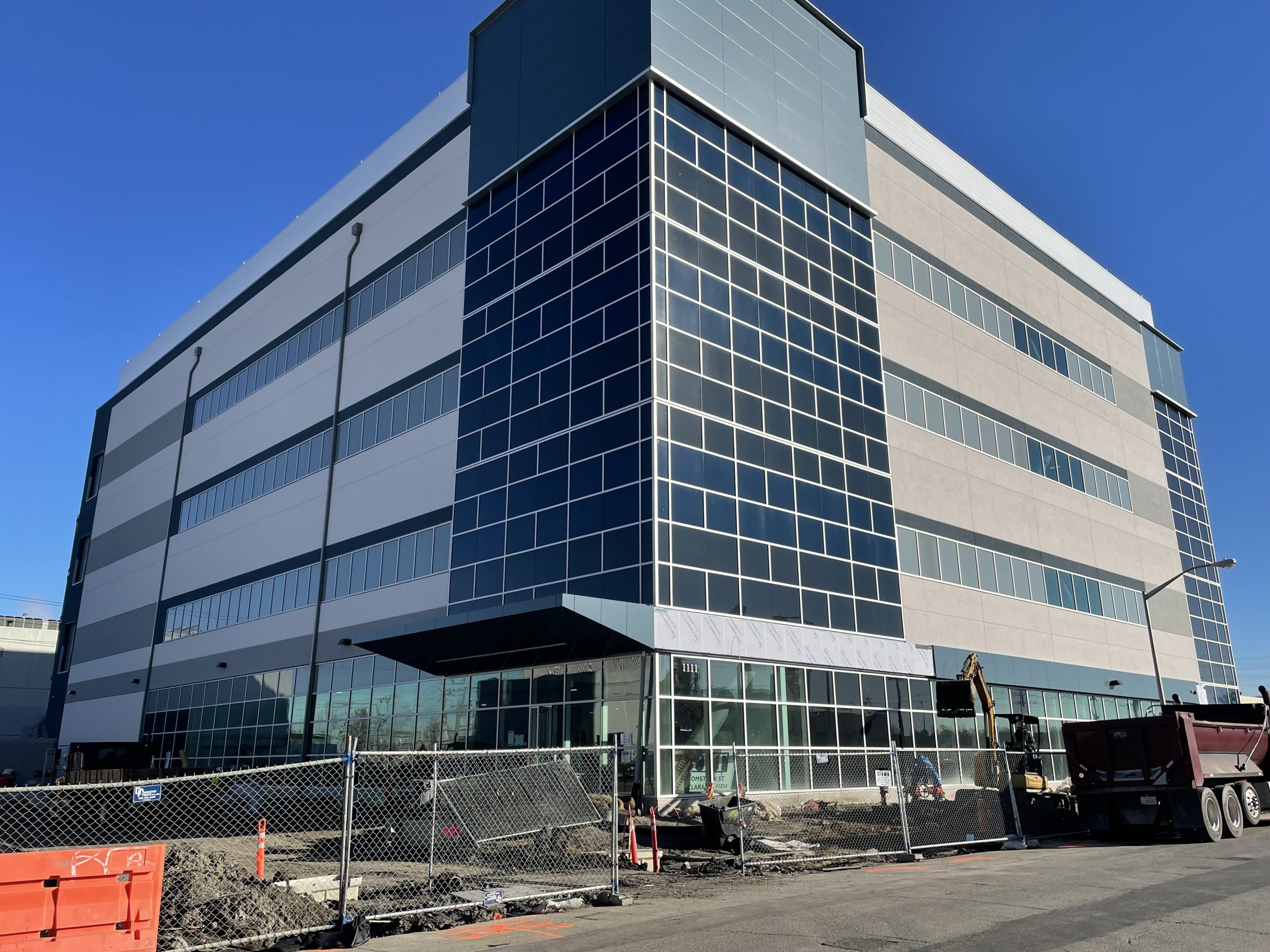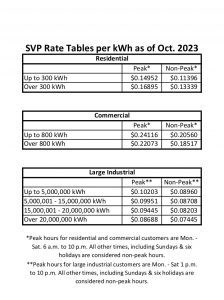Santa Clara’s power problem continues to go unchecked as Silicon Valley Power (SVP) prepares to introduce another rate increase and warns that plans for new data centers in the City could consume the rest of the City’s power supply.
At the Oct. 10 City Council meeting, SVP’s Chief Electric Utility Officer Manuel Pineda told the Council that the utility would ask for a new rate increase in December, less than six months after the most recent increase. He also warned that the demand for power is increasing and usage is nearing the City’s current power limits.
One of the biggest drains on the City’s power supply is data centers. As The Weekly reported in January, Santa Clara is the data hub of Silicon Valley. There are more data centers operating in Santa Clara, than in San Jose, Sunnyvale and Mountain View combined. In fact, the number of data centers in Santa Clara accounts for more than 1% of the data centers in the entire United States.*
The number of data centers in Santa Clara is set to grow in the coming years. Pineda told the Council that more than a half a dozen data centers are in the process of building in the City. At least 15 others are in various stages of planning.
At a Planning Commission meeting in October 2022, it was revealed that 91.4% of the City’s power goes to industrial areas. City staff did not contradict a planning commissioner who correctly guessed that 90% of that industrial power goes to data centers. In total, that’s about 82% of the City’s electricity and with the new massive data projects in the pipeline, that 82% is only going to grow.
Residents, Small Businesses Start at a Disadvantage
None of this would matter if data centers were paying 82% of the City’s electricity bills. However, SVP’s current rate structure is stacked so that residents and small businesses are paying more than their fair share.
The Weekly examined SVP’s rate tables for residents (Rate Schedule D-1), mom and pop commercial customers (Rate Schedule C-1) and “large industrial” (Rate Schedule CB-6) – a category into which a majority of data centers fall – and found some glaring discrepancies.
For example, the term “peak hours” means different things for different customers. Electricity usage at peak hours costs more. For residents and small businesses, that higher price is charged from Monday through Saturday from 6 a.m. to 10 p.m.**
However, for large industrial businesses like data centers which run 24 hours a day, “peak hours” only exist from Monday through Saturday between 1 p.m. and 10 p.m.**
Moreover, residential customers are charged more when they exceed 300 kWh of use in a month. Each kWh used over that 300 kWh threshold is charged at a higher rate.
Conversely, commercial customers pay less for every kWh used over 800 kWh in a month.
Data centers receive the largest break. Their rates drop when they exceed 5 million kWh per month, then drop again at the 15 million kWh mark and again at the 20 million kWh per month mark.
Worst of all, no one starts on equal footing. The October 2023 SVP rate schedule shows that residents pay $0.14952 per peak kWh. Small businesses like Stan’s Donuts or Mission City Grill pay $0.24116 per peak kWh. The large industrial businesses like data centers pay $0.10203 per peak kWh.
The City also leaves open the possibility of separate sales agreements with large businesses like data centers. The CB-6 Rate Schedule includes a note that says: “This Schedule is closed to Customers covered by a separate Electric Sales Agreement between Customer and SVP.”
However, Pineda says the City has no separate rate agreements with data centers.
“There are no rate contracts between SVP and data centers or any other customers,” said Pineda. “Data centers, like all other customers, pay per their usage at the published rate schedules.”
Santa Clarans Pay While the Bay Area Streams
When all of these differences are taken into account, it’s easy to see how the system is structured so that residents and small businesses end up paying more than the 18% of electricity they are using.
The Weekly did some conservative calculations. For every 100 million kWh used in Santa Clara, 82 million of those are fed to data centers. The other 18 million are distributed between all the other customers in Santa Clara.
To make things simple, we used the residential rates (remember mom and pop businesses pay more) for all 18 million kWh and assumed that no customer paid more than the base price by exceeding the 300 kWh threshold. We estimated that 75% of the usage would happen at peak hours, with 25% happening at non-peak. With all that being true, residents would account for $2,531,340 of SVP’s revenue on 100 million kWh.
On the data center side of things, we assumed 37.5% peak usage and 62.5% non-peak usage, since data centers have more advantageous peak and non-peak hours. We also assumed that none of the data centers exceeded the 5 million kWh threshold. Given that situation, data centers would contribute $7,729,422.50.
While this is a basic and crude test, it shows that a majority of Santa Clarans – even without paying the higher rates attributed to small businesses or any overage charges that residents experience – are at least contributing 24.7% of SVP’s total revenue for 100 million kWh. Meanwhile, data centers – without receiving any of the benefits of overage discounts – are paying just 75.3%.
The City needs to start asking, is it fair that a majority of the City’s population, i.e., the residents and small businesses – who consume only 18% of the City’s electricity – pay nearly 25% of the City’s electricity costs?
Equal Rate Increases for All
The longer this current rate system stays in place, the larger the effect is going to be on residential and commercial customers. The gap seems to be growing at a faster and faster pace.
Up until 2023, SVP increased rates at a steady pace of 3% every January. However, in 2023, the Council granted SVP two dramatic rate hikes, 8% in January and 5% in July. SVP said the rate hikes were out of its control, pointing to outside factors like skyrocketing natural gas prices and the increased cost of construction.
However, despite one classification of client using four times more electricity than all other classifications combined, the rate increases happened equally for all customers. When asked why SVP could not increase rates for certain customers, such as data centers, without increasing rates for everyone, the utility explained that as a public entity, rate increases must be applied to all customers.
Until SVP adjusts its rate tables to make the system more equitable, every rate increase will exacerbate the gap between residents and small businesses and data centers. While the difference is only fractions of a penny per kWh each time, those fractions start to add up.
Choosing Data Centers Over Residents
City planners have consistently contended that data centers are a great benefit to cities. Not only do they offer a steady stream of revenue, but with only a handful of employees required to operate each data center, these businesses do not contribute to traffic congestion.
But how do these businesses contribute to the City of Santa Clara economically? What impetus do Santa Clarans have to foot the bill for these environmentally unfriendly behemoth buildings?
Santa Clara’s business tax is based on a headcount, but the City has already contended that the low headcount is one of the benefits of a data center. So, there is no business tax benefit to Santa Clara.
There is no sales tax revenue coming into the City either. California does not require a sales tax on Software as a Service (SaaS). Because data is not a tangible object, it cannot be taxed in Santa Clara.
Data centers are a reliable source of property tax revenue, but with more than 1% of the nation’s data centers within the 18.4 sq. miles of Santa Clara’s city limits, exactly where is the line? At what point do City leaders and planners come to the decision that something other than data centers should consume the City’s land and electric resources?
Maybe something like housing, which has become exponentially more valuable in the tech capital of the world than data, would be a better option.
*Statista reports that as of September 2023, there were 5,375 data centers operating in the United States. (https://www.statista.com/statistics/1228433/data-centers-worldwide-by-country/)
**The City has six holidays – New Year’s Day, Memorial Day, Independence Day, Labor Day, Thanksgiving Day, Christmas Day – are excluded from “peak hours” calculations.













So glad someone is saying this; now will the elected officials DO anything about this imbalance????
Residents and small business should not be footing the bill for data centers. I am assuming that all kilowatts that SVP purchases or produce cost the same. there for SVP should sell them for the same mark up. You could charge data centers and increased mark up since they do not pay business tax. I believe there are many ways to even things out if some thought is given to the problem. The data center considers the electrical cost when they set rates for their customers, The data center does not pay for electricity, that cost is passed to the end user of the storage/streaming cost. Data centers get lower cost, residents pay higher cost and then pay more as they use data centers data.
I do not want to pay 80 million dollars for a substation that is primarily for data centers. They City often talks of cost recovery this apparently does not apply to data centers because it is recovered from residential consumers.
City Council and SVP remember we the people are supposed to be in charge.
If we’re going to encourage greater efficiency in electricity consumption there should be more tiers and the rate should go up with each tier, particularly with gigantic consumers. Otherwise, where’s the incentive to consume less?
Also, allegedly us residents consume only “green” electricity based on the purchase of “offsets”. Another scam I suspect. We need some more transparency on that.
Erika,
.
What was the percentage of electrical use and SVP revenue that residential users paid before data centers were a major electrical user in Santa Clara? Did this percentage go up with the growth of data centers or did it go down or remain about the same?
.
Have you reached out to Manuel Pineda to interview him on this issue? I hope that you do and that he can share more information and expertise so that you do not have to rely upon “basic and crude” guesswork and we can all be better informed.
There might be reasons why an industrial cost could go down with increased usage (I.e., splitting up amounts and billing individual accounts has an account and it might be easier to bill 1 industrial account with 20M kWh than 65,000 300 kWh accounts. Mailing out bills, dealing with different payments, dealing with client contacts, etc. all make servicing smaller residential accounts possibly more than industrial accounts.
That said, it does feel a little bad that industrial costs less than residential.
One thing to see if the costs are close is comparing SVP to PG&E. Looks like PG&E is charging 38 cents a kWh as their base residential rate (or possibly a range of 26 to 54 depending on accounts), so the ~11-17 cents from SVP for residential still looks attractive compared to PG&E (not that PG&E is ever the “best” of anything).
We will be spending $80M to upgrade the SVP system because of the need to feed the Data Centers that love our cheap rates. Why should the residents and small businesses pay for any of that if the Data Centers are driving the need?
Another thing to look at is the public benefit charge on the monthly bill. Where does that money get spent?
As Michael said above, you should really do a comparison to equivalent rates charged by PG&E. There’s no doubt the rate structure needs to be rationalized but let’s not lose sight of the fact we are paying about 1/3 of what PGE customers are paying, with much better service.
I agree with the other residents in demanding that the city explain why we should be subsidizing the data centers. If property tax is the only income from these, I am sure we can get better tenants, that not only pay the property taxes but also generate more sales taxes.
At the minimum, city should ensure that the high power users should pay for the infrastructure upgrades than spreading it across residents.
Ve Ga,
.
Residents of Santa Clara are not subsidizing the electrical usage of data centers. SVP sells electricity to data centers for a profit. Their rate is lower because they use much more power and it is cheaper for SVP to deliver each unit of power and so their rate is lower because they get a volume discount. This is generally true of all business customers of SVP.
How about a “pro-rated” electric rate based on power consumption divided by the number of actual on-site employees?
Commercial and industrial electrical customers have always paid lower rates than residential customers and this is the case everywhere not just in Santa Clara.
.
Bigger electrical users afford a utility a great deal of economy of scale in selling power. It costs much less for a utility to deliver a unit of electricity to a huge user than it does for a tiny one and so the rate is lower.
.
This is normal and it is irresponsible to write an article about SVP in a way that insinuates that this is unfair to residential customers.